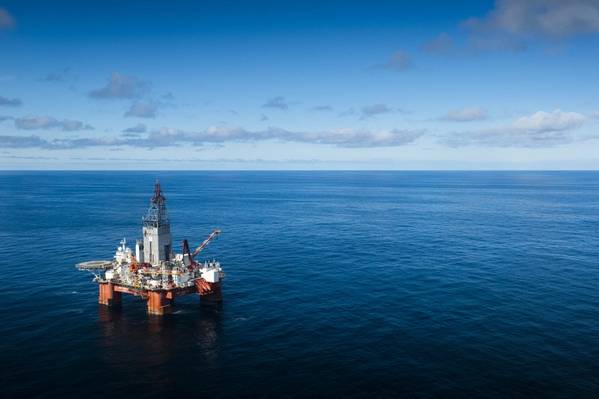
Equinor has drilled a dry well in the Gjoekaasen Deep prospect in the southeastern part of the Barents Sea, the Norwegian Petroleum Directorate said on Tuesday.
Wildcat well 7132/2-2 was drilled by the Seadrill drilling rig West Hercules about 175 kilometers north of Vardø, in 304 meters water depth.
This was the second exploration well in production licence 857, awarded in the 23rd licensing round in 2016. The first well, which targeted a shallow prospect, was also dry, the Petroleum Directorate said in February.
Equinor, as operator, holds 40% interest in the licence, while partners Aker BP, Lundin Petroleum and Petoro each hold 20%.
The primary exploration target for well 7132/2-2 was to prove petroleum in reservoir rocks from the Early to Late Triassic Age (the Snadd, Kobbe and Havert formation). The secondary exploration target was to prove petroleum and reservoir potential in the lower Havert formation (Early Triassic Age).
In the primary exploration target, well 7132/2-2 encountered 25 meters of sandstone reservoir with moderate to good quality in the Snadd formation (Carnian Age), 17 meters of sandstone reservoir with poor to moderate quality in the Kobbe formation and 26 meters of sandstone reservoir with poor quality in the upper Havert formation. Sandstone reservoir was also encountered in the Klappmyss formation (Early Triassic Age) in a thickness of 17 meters with poor quality.
In the secondary exploration target in the lower Havert formation, the well encountered an interval of approx. 110 meters of sandstones with very poor reservoir quality. High measurements of formation gas led to an extension of the well. The objective of the extension was to evaluate potential presence of source rock and underlying reservoir rocks in the Lower Triassic and Upper Permian (the Ørret and Røye formation). No reservoir rocks were encountered in this interval. The well is dry.
Data acquisition and sampling have been carried out.
Well 7132/2-2 was drilled to a vertical depth of 3,496 meters below the sea surface, and was terminated in the Røye formation from the Late Permian Age. The well will be permanently plugged and abandoned.
The West Hercules drilling facility will next undergo maintenance at Polarbase before moving on to drill wildcat well 7335/3-1, known as Korpfjell Deep, in production licence 859 in the Barents Sea, where Equinor is operator.